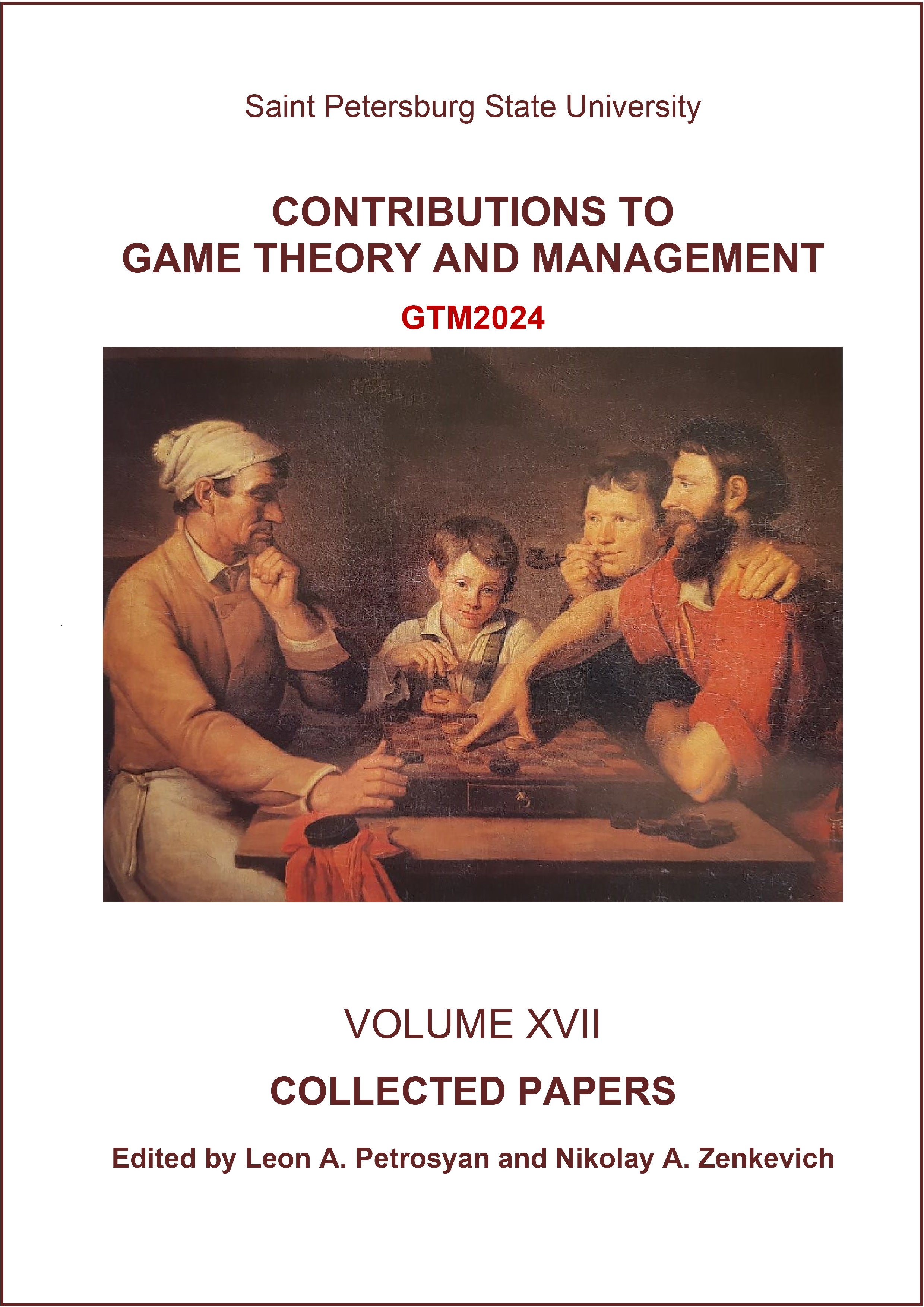Differential Games of R&D Competition with Switching Dynamics
Abstract
This paper investigates a differential game model of R&D competition, starting with a two-stage structure and then extending this structure to a generalized multi-stage model.The two-stage model captures distinct efficiency dynamics, and the Nash equilibrium analysis reveals optimal strategies for resource allocation. The multi-stage extension generalizes these insights, providing a broader view of firms’ strategic adjustments. The study identifies these key properties: the consistent ratio of control efforts across different stages, the structural uniformity of Nash equilibrium strategies, and the continuity of these properties in multi-stage scenarios. These findings enhance the understanding of strategic behavior in competitive innovation environments.
Keywords:
differetial game, R&D competition, optimal control
Downloads
References
Balas, T., Tur, A. (2023). The Hamilton-Jacobi-Bellman Equation for Differential Games with Composite Distribution of Random Time Horizon. Mathematics, 11(2), 462.
Beach, R. (2017). Numerical Methods for Differential Games: Capital Structure in an R&D Duopoly. International Journal of Economics and Finance, 9(2), 46–57.
Dockner, E. J., Feichtinger, G., Mehlmann, A. (1993). Dynamic R&D competition with memory. Journal of Evolutionary Economics, 3, 145–152.
Dockner, E. J., Feichtinger, G., Mehlmann, A. (2000). Differential games in economics and management science. Cambridge University Press: Cambridge, UK.
Feichtinger, G. (1982). Optimal policies for two firms in a noncooperative research project. In: Feichtinger G. (ed) Optimal control theory and economic analysis. North-Holland, Amsterdam, pp. 373–397.
Gromov, D., Gromova, E. (2017). On a Class of Hybrid Differential Games. Dyn. Games Appl., 7, 266–288.
Jiang, H., Yao, F., Gao, H. (2024). Dynamic and Stable R&D Strategies for Green Technology Based on Cooperative Differential Games. Mathematics, 12(20), 3300.
Kamien, M. I., Schwartz, N. L. (1972). Timing of innovations under rivalry. Econometrica, 40, 43–60.
Keller, A. A. (2007). Stochastic Differential Games and Queueing Models To Innovation and Patenting. Contributions to Game Theory and Management, 1, 245–269.
Reinganum, J. F. (1982).A dynamic game of R&D: patent protection and competitive behavior. Econometrica, 50, 671–688.
Riedinger, P., Iung, C., Kratz, F. (2003). An optimal control approach for hybrid systems. European Journal of Control, 9(5), 449–458.
Tur, A. V., Magnitskaya, N. G. (2020). Feedback and open-loop Nash equilibria in a class of differential games with random duration. Contributions to Game Theory and Management, 13, 415–426.
Wang, H.-M. (2016). R&D, patents and innovation: a differential game approach. [Thesis, externally prepared, Universiteit van Amsterdam].
Yanase, A., Long, N. V. (2024). Mixed Market Structure and R&D: A Differential Game Approach. Dynamic Games and Applications, 14, 97–132.
Downloads
Published
How to Cite
Issue
Section
License
Articles of "Contributions to Game Theory and Management" are open access distributed under the terms of the License Agreement with Saint Petersburg State University, which permits to the authors unrestricted distribution and self-archiving free of charge.




